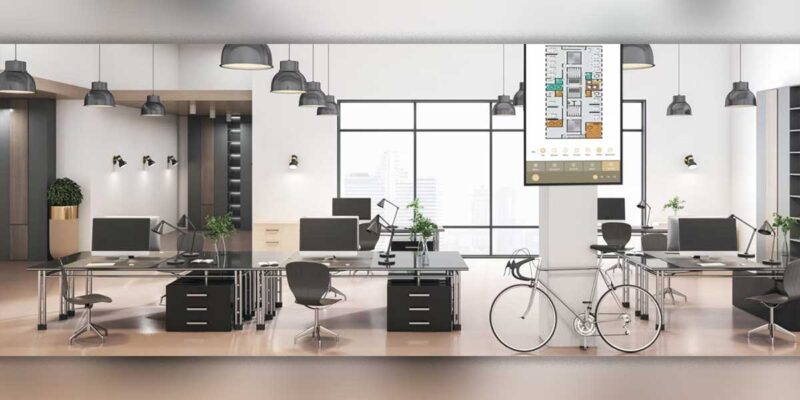The Battle for Hybrid Work and the Future of Workspaces: CEOs vs. Employees

If you’ve been watching corporate America lately, you might think hybrid work is on the brink of extinction. While hybrid work isn’t actually disappearing, many CEOs wish it would — though for reasons more about power than productivity. Sure, there are some leaders who genuinely believe in-person collaboration boosts innovation, but most have come to realize that’s not the whole truth. Beneath the surface of claims about “improving company culture” lies a less flattering motivation: regaining control. Meanwhile, for employees, hybrid work has become synonymous with autonomy, flexibility and a new era of work-life balance. The notion that returning to the office is necessary rings hollow, especially since no business full of knowledge workers collapsed during the pandemic. People kept working, and they did just fine — so much so that the genie’s not going back in the bottle no matter what some CEOs want.
The CEO’s Thinly Veiled Agenda
CEOs are making strong pushes to return workers to the office full-time, but their claims about fostering culture and collaboration often serve as a smoke screen. What many of them truly miss is the sense of power inherent in their special corner of human nature — knowing that the workforce is within arm’s reach, under constant supervision. Like a ’90s sitcom dad sneaking into his kid’s room to make sure they’re not sneaking out, these executives believe that if they’re not watching, nothing will get done.
This is an old mindset that will eventually age out. The idea that face time equals productivity has been baked into corporate culture for decades. Yet, the pandemic showed us otherwise. During the height of remote work, many employees thrived, and productivity surged. Now, the same CEOs who don’t want to admit they were wrong are slinging buzzwords like “collaboration” as a reason to bring people back. But make no mistake — it’s less about collaboration and more about control. They miss the sight of employees neatly seated in their cubicles, where they can watch their every move.
Why Employees Aren’t Buying It
On the other side of the argument stands the workforce, and they’re not buying the rhetoric. For employees, hybrid work is about more than just staying home in their pajamas; it’s about having the power to decide how and where they work. Much like how Netflix annihilated Blockbuster (once people tasted streaming there was no going back to driving across town to pick up a VHS), once employees experienced the flexibility of hybrid work, there was no going back to a rigid nine-to-five office life. And yet, many CEOs argue for the importance of “spontaneous collisions”— unplanned, in-person interactions that they believe foster collaboration and creativity in office environments. These arguments are a fantasy that could never have happened at companies with teams distributed in multiple cities. If everyone is using collaboration tools to work together most of the time, what difference does it make if they’re taking the Zoom call at their desk at home or in an office?
The flexibility of hybrid work gives people the best of both worlds: social engagement at the office when needed and properly scheduled, and the focused productivity of home when preferred. It’s not about being anti-office; it’s not even about preferring remote work. It’s about having autonomy and being trusted to choose. Hybrid work also leads to a better work-life balance, less stress and higher job satisfaction. Workers aren’t asking for this because they’re lazy. They’ve realized hybrid work isn’t just a perk — it’s essential for their well-being. And here’s the kicker: productivity didn’t suffer during remote work; in many cases, it improved. This is a win for employees, and it could be a win for businesses too — if only some CEOs would let it happen.
The Companies Adapting Versus Those Stuck in the Past
Not all companies are trapped in this 1990s sitcom rerun, though. Some are adapting to the hybrid model, focusing on what truly matters — results. Tech companies like Microsoft, Zoom and Nvidia have embraced the hybrid shift, investing heavily in collaboration tools that create seamless work environments no matter where employees are located. These organizations are rethinking the office as a flexible space, one that supports occasional collaboration rather than demanding daily attendance. They’ve come to realize the future of work isn’t about forcing people back to their desks — it’s about empowering them with choice and flexibility. Offices are no longer cubicle farms but environments designed with purpose: breakout rooms, huddle spaces and technology that integrates seamlessly into the workspace — technology that is a living part of the facility design, not an 11th hour, slapped-on hang-and-bang experience.
Then there are the companies still clinging to outdated ideals. These are the ones in the headlines, where the CEO mandates a return to the office in the name of “culture and innovation.” Peel back the curtain, and it’s clear they’re more interested in control than collaboration. Many of these organizations are seeing an uptick in turnover as employees, particularly those in high-demand sectors, leave for companies that offer more flexible arrangements. While progressive companies are using hybrid work as a tool to attract and retain top talent, others, stuck in the past, are left wondering why their recruitment efforts are falling flat. Or, even more nefariously, are using these mandates to get employees to quit rather than admit to having layoffs.
At the end of the day, hybrid work isn’t about the office itself — it’s about how companies structure work. Those that succeed are the ones focused on outcomes rather than optics. Workers are more engaged and productive when they have the autonomy to craft their day, and businesses benefit as a result.
The Future of Workspaces
The traditional office isn’t dead, but it’s transforming. Many companies are betting big on hybrid work as the future, turning offices into spaces for collaboration rather than grindhouses where people are chained to desks. New office designs focus on creativity and flexibility, with breakout rooms, biophilic elements (plants, everywhere!), and spaces that foster innovation. Smart organizations are investing in technology and infrastructure that supports their employees wherever they choose to work. Companies that fail to adapt, however, may soon find themselves as out of place as a flip phone in an era of smartphones.
Hybrid work isn’t just a temporary trend, no matter what some CEOs may want to believe. Employees have tasted autonomy, and they’re not about to let it go without a fight. The businesses that thrive in this new world will be the ones that embrace flexibility and empower their workforce. As for the rest? Well, in the AV world we’ve been using the phrase “Evolve or die” for decades. It’s time for CEOs and their companies to pick one or the other.





